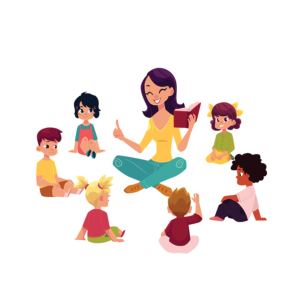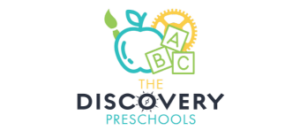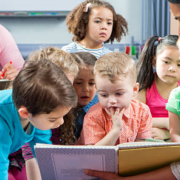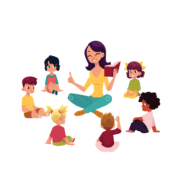Why Having an On-site Cook Has Changed Our Child’s Preschool Experience
/0 Comments/in blogs, Preschool Education, Preschool Ponderings /by marketingadminWhat to Expect After Your Child Graduates from Pre-K
/0 Comments/in blogs, Preschool Education, Preschool Ponderings /by marketingadminBenefits of STEM Education When Introduced at a Young Age
/0 Comments/in blogs, Curriculum, Preschool Education, Preschool Ponderings /by marketingadmin4 Critical Skills Your Child Learns During Circle Time
/0 Comments/in blogs, Curriculum, Preschool Education, Preschool Ponderings /by marketingadminMother’s Day
/0 Comments/in blogs, Preschool Ponderings /by marketingadmin
Did you know that the first largely recognized Mother’s Day Celebration is due in part to the financial backing of a Pennsylvania resident? Back in 1908, thanks to funding from John Wanamaker of Philadelphia, thousands of people attended a Mother’s Day event at one of Wanamaker’s retail stores. The celebration was prompted by Anna Jarvis in an attempt to honor all mothers and the sacrifices made on behalf of their children.
Following the success of this event, Anna started a campaign reaching out to newspapers and politicians to effect this holiday. Woodrow Wilson- in 1914- signed a measure to officially establish the second Sunday in May as Mother’s Day.
While as educators we pride ourselves on nurturing the young children in our care physically, cognitively, and emotionally we say thank you to all the mothers and grandmothers of our students for putting trust and confidence in us to continue the educational journey that you have begun.
Wishing everyone . . .
- The opportunity to spend time with the special mother and grandmother in your life.
- Time to reflect and bathe in the memories of the special mothers and grandmothers no longer here with us.
- The time and space for mothers and grandmothers to express self-love and be mindful of their own needs.
Extending wishes of a Happy Mother’s Day! Make it the best one yet with the intent to create beautiful memories!
Separation Anxiety 101
/0 Comments/in blogs, Preschool Education, Preschool Ponderings /by marketingadminAttracting & Retaining Quality Educators
/0 Comments/in blogs, Preschool Ponderings /by marketingadmin
A question that often arises when mention is made of a waitlist is whether the list is due to a shortage of staff or because all spaces are occupied. Unfortunately, the former rather than the latter is more common. We are so fortunate at Newtown Discovery Preschool to announce that our waitlist is due to our reputation and space limitation.
How do quality centers combat this issue? This takes planning, commitment and intent to resolve. The Bureau of Labor Statistics reports that there are 79,600 fewer early childhood educators than prior to the pandemic. This number is staggering!
Why are educators leaving the industry at such astronomical rates? Reading the data supplied by RAPID-EC (Rapid Assessment of Pandemic Impact on Development-Early Childhood), a national survey from the Center on Early Childhood out of Stanford University, the rationale is evident:
- Retail positions often pay more than jobs in child care programs and offer more flexible scheduling and better benefits.
- One in four child care workers nationwide report difficulty affording housing.
- One in three child workers report food insecurity.
- Providers also report high levels of stress, anxiety, and depression
The average hourly rate for child care workers is $13.22. This is lower than most occupations nationwide. Additionally, this is lower than Pennsylvania’s living wage calculation which (while still low) is greater than this average at $16.41/ hourly for a single adult.
We, at Newtown Discovery Preschool, are proud of our efforts and our results in effecting change in the lives of our educators. This is accomplished in several ways:
- Our lead teachers are salaried employees receiving wages commensurate with their colleagues in elementary and secondary school settings.
- Hourly assistant teachers are paid at a significantly higher rate than local early childhood programs (and those nationwide).
- We offer medical benefits and free dental cleanings to full-time employees.
- We provide free athletic club memberships (including the outdoor pool) to our employees.
- Celebrating milestones and creating a work “family” creates a feeling of community.
It is essential that we focus our efforts on supporting and encouraging our educators just as we do our students. While we celebrate National Teacher Appreciation week yearly, we do our best to ensure that our teachers feel our gratitude daily. Remember: A few kind words can have a HUGE impact!
Our two main locations are in Newtown and Warrington and we support the Doylestown area.
When to Begin the Child Care Search
/0 Comments/in blogs, Preschool Education, Preschool Ponderings /by marketingadminBenefits of Soccer in Early Childhood Education Programs
/0 Comments/in blogs, Preschool Ponderings /by marketingadmin
Physical development is a domain that is addressed in any quality early childhood program. Although children in these programs are under six years of age and are often too young to display serious athletic prowess, the benefits are great.
Playing soccer and practicing ball skills enables children to see that practice does lead to improvement and that effort equates to success. This builds self-esteem and confidence.
Additional benefits of soccer include:
- Improving language and social skills
- Lowering body fat
- Improving cardiovascular fitness
- Muscle toning
- Improving focus
- Building eye-hand coordination
- Spatial awareness
- Improving grasping skills
- Improving balance
- Promoting teamwork and cooperative play
- Reducing stress
- Instilling discipline
- Promoting sportsmanship
- Teaching the art of losing gracefully
Soccer combines speed, strength, and skill and is a great introduction to team sports.The fundamentals include dribbling, shooting, running, and kicking. By age two, children should be able to kick a ball forward for 3 feet in a straight line. Additionally, they should be able to stand and hold arms in front with palms face up in anticipation of catching a ball. This will increase to a distance of 6 feet by age 3. At this time, using opposing arm and leg movements becomes more fluid. Skills continue to develop with age.
Soccer is especially useful to increase engagement for those that are not native English speakers or those with communication delays. As the old adage states, “Actions speak louder than words.” Watching facial expressions and reactions during play translates clearly.
If your early childhood program does not offer soccer, you can reach out to your local township to learn about community leagues. Teamwork does indeed make the dream work! Collaboration and cooperation learned at an early age leads to future success!
Our two main locations are in Newtown and Warrington and we support the Doylestown area.
Locations
27 Blacksmith Road
Newtown, PA 18940
847 Easton Road
Warrington, PA 18976
Contact Us
(267) 753-6040
enrollment@thediscoverypreschools.com










